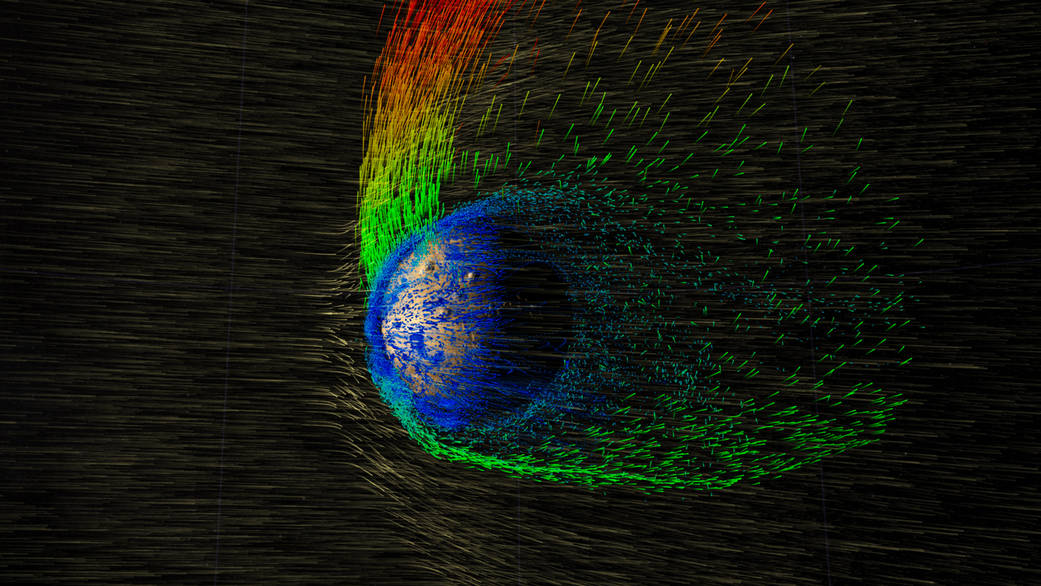Mars today is a cold, barren desert, but scientists think it was once a warm and wet planet. The change may have been caused by the loss of an early atmosphere driven into space by the sun’s solar wind. Unlike Earth, Mars lacks a global magnetic field that deflects the stream of charged particles continuously blowing off the sun. Instead, the solar wind crashes into the planet’s upper atmosphere, stripping away electrically charged gas atoms, called ions (depicted here in a simulation).
NASA’s MAVEN spacecraft, which entered orbit around Mars in September 2014, measures the speed and direction of escaping ions to observe the process of how Mars’ atmosphere is eroded by the solar wind. Measurements show the rate of ion loss increases during periods of extreme solar activity, suggesting a younger and more active sun billions of years ago likely played a significant role in transforming the Red Planet.
Credit: NASA’s Goddard Space Flight Center
More images and information: http://svs.gsfc.nasa.gov/12046




























